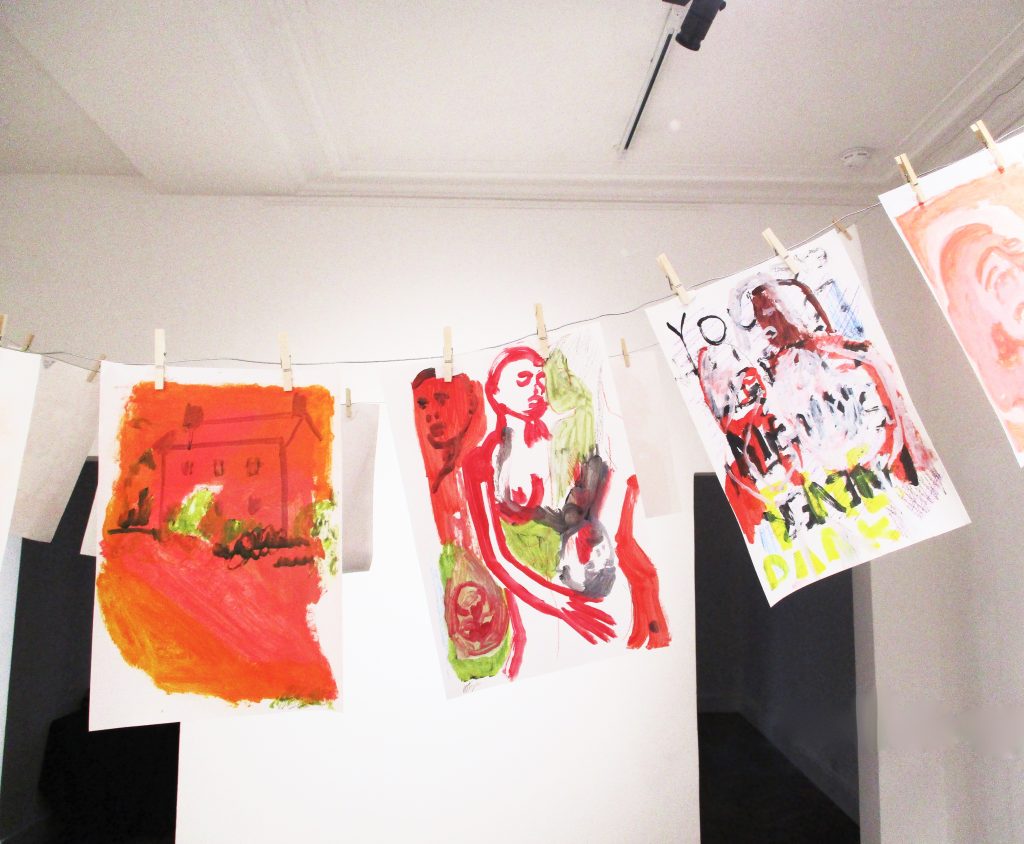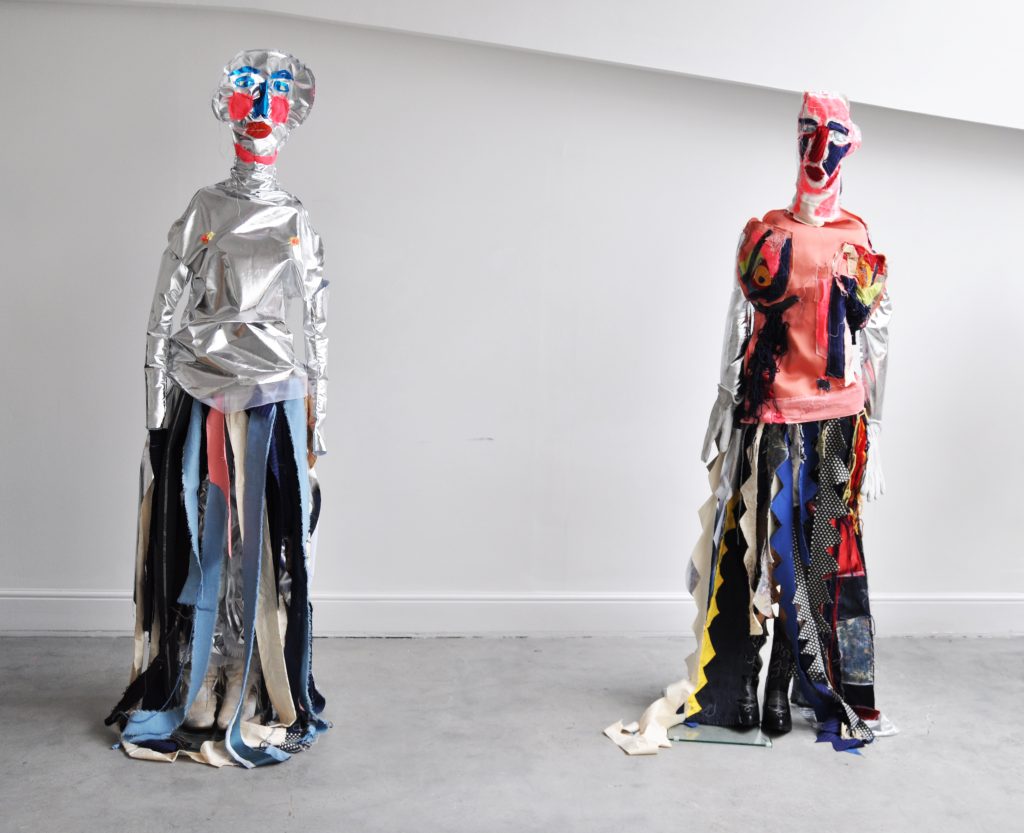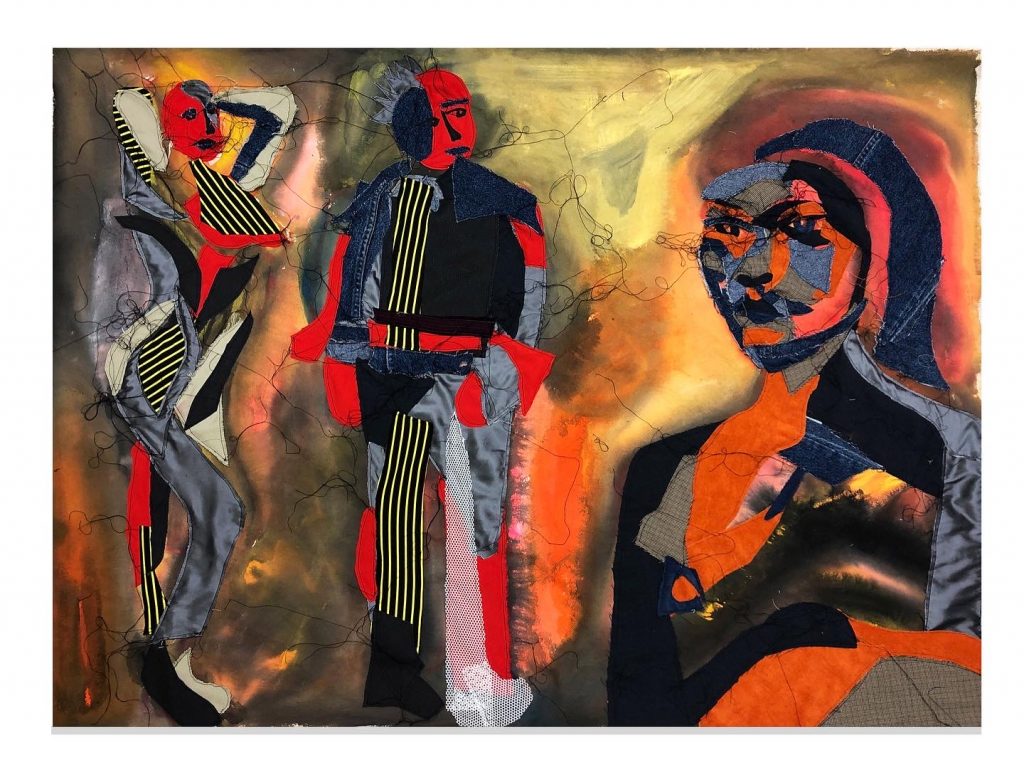Alexander James Interview – “I try and attach a little part of my past life into each of the characters I create.”
Originally published in FAD Magazine
December 2019
Hector Campbell: It would be difficult to discuss your artistic output of the last twelve months without first looking back to 2018, and in particular to what became a pivotal trip to the deserts of Arizona and New Mexico. How did that trip come about? And could you explain the importance it has come to have on your work?
Alexander James: My Grandfather was the first person that introduced to New Mexico; from a young age he used to show me the films and photos that he shot through the deserts of Arizona, New Mexico and Texas. He used to shoot everything in black and white but would tell me about the locations and colours he saw. He also gave me a huge insight to some great films in general and introduced me to one of my favourite films of all time, ‘High Noon’, set in a small town in New Mexico, directed by Fred Zimmerman. So growing up, it was always on my agenda to check it out. Through multiple conversations with a close friend and another artist based in LA we planned the trip.
Being in Arizona and New Mexico was so special because it really opened my palette and confirmed a lot for me. It was just one large playground to experiment with. I collected so much footage and accumulated so many sketches of characters I wanted to paint and construct that when I got home it was almost overwhelming where to start. By collecting so much raw footage in New Mexico, it really went on to form the foundation of my practice in a fresh manner, investigating memory and personal experience through the lens of thermal imagery, to begin with.
H.C: In early 2019 you documented via your Instagram a few early experiments with soft sculpture, humanoid figures fashioned from painted plastic and tissues. Aside from your installation projects such as 2018’s ‘American Dream’, were these your first forays into sculpture? What drew you to transferring your figurative, painterly characters into the three-dimensional realm?
A.J: I had just finished a large painting titled ‘Showers in The Sea’ during my residency at Whitley’s in 2018, which was the painting that encouraged me to create sculptures out of tissue, plastic, paint and anything else that was lying around the building.
The beginning process was playful, trailing lots of mediums and ideas before I showed anything to anyone. I’ve always enjoyed putting random objects together that belong far from each other, so when it came to collaging, it was something I’ve always incorporated into my work. I started applying the same methodology with a range of existing fabrics, to build the 3D sculptures I exhibited in my solo show with Working Projects. I wanted the sculptures to exist as larger physical objects; I wanted to feel their presence outside of paintings, providing them with personalities and individual dispositions when exhibiting them.
H.C: In March/April of 2019 you exhibited with Rafaela de Ascanio in ‘The Deccan Traps’, a two-person exhibition in Mayfair, curated by Aindrea Emelife. Alongside the figurative, ethereal paintings your audience is accustomed to, this exhibition also saw you present a new, immersive installation piece, plus the first glimpse of your video project ‘Immortal Lands’. How do you approach the creation of your installation works? In what ways are they related to your paintings, sculptures and video pieces?
A.J: It’s quite a natural process; often they are created from instinct, snippets of thoughts, memories and ideas combined. I try to re-create elements of situations I’ve seen or have personally encountered, and by using a variation of gathered objects that I’ve found from several locations, it already brings circles of stories together, which is a nice starting point. The installation works are no different from what I feel when painting on canvas; it’s just another medium and perspective on my subject. It should intuitively feel all connected; there are subtle links between all the mediums I use.
H.C: Your latest London solo exhibition, ‘Sharper Than Razor Blades’, opened at Working Project in Notting Hill in July, where you debuted both your soft sculpture and digital collage works, alongside new paintings and further excerpts from ‘Immortal Lands’. Could you explain the process behind embarking upon a body of soft sculpture works? And how you went about translating characters from your paintings and video into three-dimensional figures?
A.J: A lot of the collage works are initially made by pausing videos that I’m in the process of creating and taking stills from them to further manipulate. By going through this technique it helped me work out the fabrics that I wanted to use for the sculptures. The characters in my artworks are triggered by a number of childhood memories. I create the characters in my artworks from either obvious or more subtle childhood references, as well as from the characters I originally sketched in Arizona and New Mexico.
The Arizona and New Mexico characters were originally built from the lucid dreams I had whilst spending a lot of time there. When I wanted to develop the characters, I imagined so much existence involved. So producing them life-size with such presence was the most similar feeling and sensation I could compare it to.
H.C: September saw your debut New York solo exhibition with ‘Sharper Than Razor Blades, Softer Than Leather’, co-curated by Paul Henkel and Louis Vaccara at The Face Apartment. Intended as a spiritual sequel to the earlier London show, you continued to explore themes of childhood memory and nostalgia, as well as our increasing digitalisation of identity, through focussing on the social uniforms of subcultures such as punks and cowboys. Could you talk a little about the influences behind this body of work? And how you look to recontextualise childhood recollections for our contemporary culture?
A.J: I found my childhood and growing up a curious process of its own, so when I create works it usually reflects on references from different periods of my younger life. I didn’t have to wear uniform at school, which meant everyone created their own. A lot of expressionism came with this, and going through phases and styles was something I heavily explored and illustrated in ‘Sharper Than Razor Blades’. I wanted to dedicate this in a lot of the artworks I made. I try and attach a little part of my past life into each of the characters I create.
Growing up in London and discovering all the diverse movements that have been injected into London is exciting. I’m interested to see where it’s going to go next, by taking a look at our current situation. With the evolution of technology there’s going to be new digital creations, which in time will eventually create their own subcultures. They will be evolving themselves and creating new identities, where movements will be created. A great book I read recently which I’d recommend is ‘The Bicentennial Man’ by Isaac Asimov.
H.C: Your final solo exhibition of the past year, ‘I Loved Your Gestures’ at Galerie Joseph in November, also served as your Paris debut. Large collages canvases appear to have been a natural combination of your lifelong painting practice and more recent soft sculpture creations and appeared alongside both the aforementioned paintings and sculpture, plus works on paper. What differentiated the works in this Paris exhibition from the two-header of the London and New York shows? Did you notice the response to your work differ amongst either the London, New York or Paris audiences?
A.J: Exhibiting works in different cities always elicits different responses, which I enjoy. I like listening to the conversations people have and how they usually pull apart certain components from each work. It’s also interesting to see which artworks people get drawn to and why.
The layout in the Paris exhibition was really nice to work with. Each show is dependant on the space, and in Paris had 4 rooms to play with. Each room within the exhibition offered a different medium, as I tried to guide the viewer through the rooms, moving between tangible reality and digital existence. The layout reflected my continued exploration into contemporary identities. I think because of the large space in the gallery it was very different to New York & London show.
In New York the space was smaller so it became intimate very quickly, forcing people to be presented closely by the sculptural works, while in London people saw the soft sculptures for the first time so that was also an entirely different response. In Paris, people who had been to my exhibitions maybe had an idea of what to expect but it definitely explored certain unusual elements much more. Each day in the studio I create a drawing - some I keep, some I chuck. In Paris I created a room with these drawings and hung them as if you were viewing your laundry drying outside. I like the concept of hanging items with a row of various stories sat next to each other.
H.C: The ‘Immortal Lands’ video project culminated in December with a screening of the completed video work in Soho and it’s premiere on the art platform NOWNESS. The collaborative piece includes footage shot in Arizona and New Mexico with the performer Azadeh, poetry written and narrated by Sonny Hall, and a soundtrack produced by Zach Nahome.
After over a year in the making, what are your thoughts on the completed video? And how important is a collaboration to you as a visual artist in the 21st-century art world?
A.J: It was special to see something I envisioned come such a long way. I felt very happy with Immortal Lands; it left me excited for my next video. I enjoyed working with my friends on this video and it came together really organically. My friend Lucas Smith came with me to shoot the footage in Arizona and New Mexico, and when I got back Sonny was in the studio with me and wrote the poem. Once finalised, we recorded it on my iPhone, I then brought it to Zach who nailed the intro and soundtrack.
Collaborating is important; it’s working together to achieve a shared goal. When you have an understanding of someone else’s creative process or at least trust or respect his or hers then it makes it a lot easier. I love seeing how individuals respond, so collaborating with likeminded people but share a different angle and perspective to you makes it all more exciting.
H.C: Finally, looking forward into 2020, you have recently announced the upcoming exhibition ‘One More Slope’ in collaboration with the British Fashion Council and BFC New Wave: Creatives, for which you will be exhibiting as well as curating. How are you approaching the curation of this project? And do you have any other exciting plans for the coming year?
A.J: The idea behind ‘One More Slope’ is to get a group response to the complications and difficulties we face and how we confront obstructions. I’m looking into how we deal with the next situation that’s presented in front of us. I want to try and curate this exhibition as an intimate visual representation of the way seven people try and face theirs. The exhibition will be exploring various mediums, from performance to sculpture.
I am aslo preparing for my solo show at Roman Road Gallery in February, and later on in the year I am hoping to spend some time in LA on an artist residency. Early in the new year I will also be releasing a series of prints which will be available online via my website.








